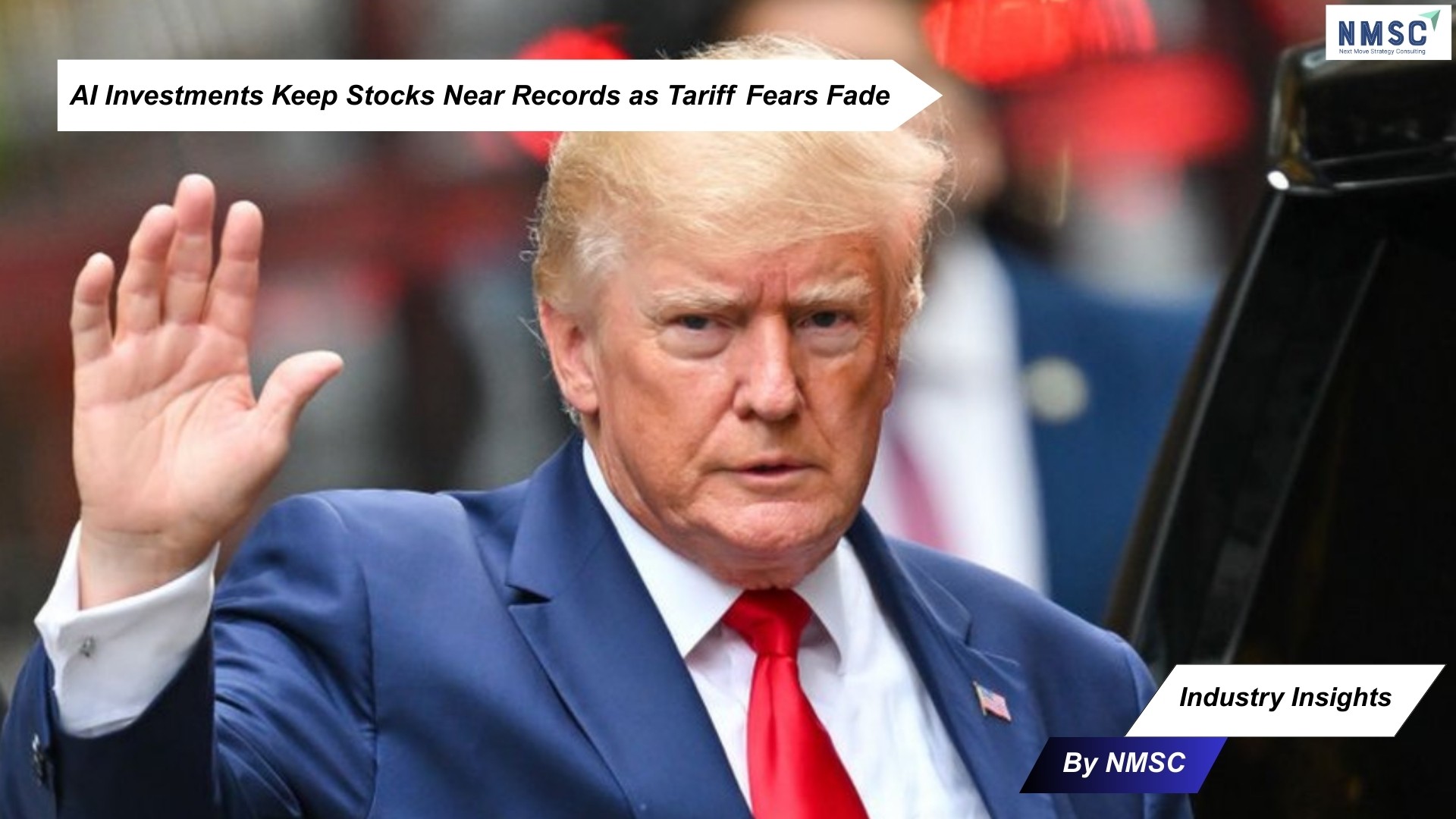AI Investments Keep Stocks Near Records as Tariff Fears Fade
Published: 2025-08-14

Industry Insights from Next Move Strategy Consulting
U.S. equity markets have repeatedly climbed to new highs even as President Donald Trump presses forward with an expanding tariff agenda. On Aug. 13, main indexes reached fresh records after investors parsed an inflation report that proved milder than many had feared — a development that, for now, has reduced immediate worries that tariffs will trigger broad-based price surges.
Why markets appear unfazed
Although tariffs raise the cost of imported goods, the recent inflation data showed only selective price increases. James Knightley, chief international economist at ING, noted that while tariffs will push some prices higher over time, he does not expect persistent inflation pressures like those seen in 2021–22. Analysts at Citi similarly observed that July’s price strength was concentrated in a few components rather than being widespread.
Goldman Sachs economists estimated consumers had already absorbed as much as 22% of recent cost increases, a share that could climb as tariffs filter through supply chains. Still, actions by firms to front-load inventories, seasonal discounting and repeated tariff deadline extensions have blunted the near-term impact on shoppers — a point underscored when Mr. Trump extended the China-tariff deadline by another 90 days.
With inflation appearing contained, traders raised the likelihood of a Federal Reserve rate cut at the September meeting. Expectations of easier monetary policy tend to lift equities because lower borrowing costs can support corporate investment and earnings, a dynamic that has helped push stocks higher since the days of market turbulence following April’s tariff announcements.
Market dynamics: concentrated gains from AI bets
The broader market rally masks an important concentration: much of the S&P 500’s gains come from a small group of technology companies that investors expect to profit heavily from artificial intelligence. Reuters, citing LSEG Datastream, reported that the so-called Magnificent Seven — Alphabet, Amazon, Apple, Meta, Microsoft, Nvidia and Tesla — now account for roughly one-third of the S&P 500’s weighted average. Morgan Stanley analysis found that by the end of July only about 9% of S&P 500 constituents were trading at 52-week highs, underscoring how a handful of names are driving overall market performance.
That skew means the market’s fortunes are closely tied to expectations for those AI-focused firms. Michael Reynolds, vice president of investment strategy at Glenmede, warned that when a few stocks dominate, disappointment at any one of them can have outsized effects on portfolios.
Small businesses and the uneven toll of tariffs
While headline indexes march higher, small firms are feeling more strain. The National Federation of Independent Businesses reported a declining share of members saying they are profitable; the NFIB quoted a fabricated-metal-products manufacturer in Michigan saying higher costs are weighing on operations and that recovery may take six to 12 months. Smaller companies typically lack the pricing power of large firms and are therefore more vulnerable as tariffs feed into supply chains.
The near-term outlook
Charles Schwab’s Kevin Gordon cautioned that the economy is not yet free of risks. A forthcoming Bureau of Labor Statistics report on wholesale inflation — a gauge closely monitored by the Fed — could change the market’s view if it shows stronger price pressures than the consumer-facing data did on Aug. 13. Absent such a surprise, conditions look less threatening than some had feared, leaving room for further gains if investors continue to favor AI-driven growth and the Fed signals more accommodative policy.
Source: NBC News
Prepared by: Next Move Strategy Consulting
















Add Comment